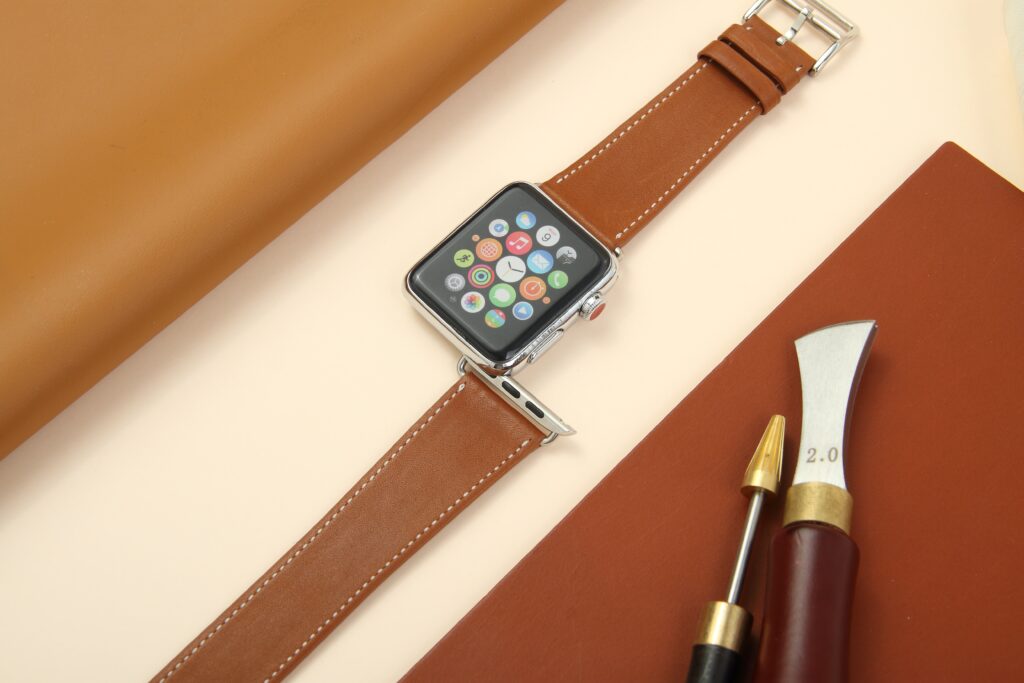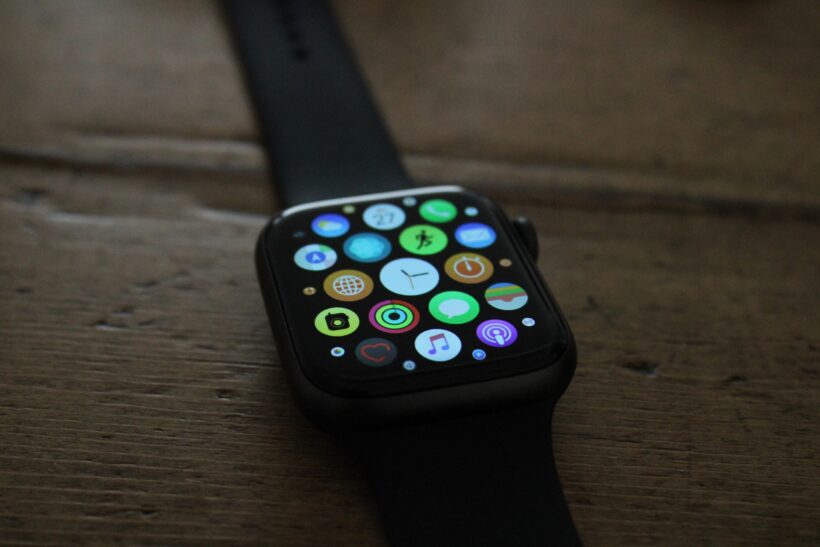Unraveling the Apple Watch Ban Conundrum
Exploring Instances of Apple Watch Bans:
• Schools: Some schools stopped smartwatches during tests and classes because they could be used for cheating and cause problems. People got worried about secretly looking at notes or talking with others by using hidden apps.
• Hospitals: Some hospitals have limited the use of Apple Watch near certain medical devices because they are concerned that electromagnetic interference from the watch might affect these equipment’s proper functioning. Studies haven’t found solid proof of danger, but in healthcare places the rule to be careful is very important.
• Government Facilities: Secret information and very secure places have caused bans in some government buildings and army areas. Making sound records or taking pictures can cause worries about possible leaks or safety issues.

The Landscape of Wearable Tech Restrictions:
The Watch isn’t the only one that has some restrictions. Wearable tech, which has many different abilities, brings special issues in various places.
• Workplace policies: Businesses may stop smartwatches to keep their work professional, stop distractions and guard secret information.
• Sports events: Fairness in competitive sports says we should limit wearable tech like smart watches to prevent unfair gain from data studying or talking during races like marathons.
• Travel restrictions: Some countries or airlines may have special rules about smartwatches because they worry about battery safety and possible problems with equipment on the plane.
The Rise of Smartwatches and the Apple Watch Phenomenon
Evolution of Smartwatches in Everyday Life:
Smartwatches have improved a lot from big, unappealing gadgets to fashionable daily friends.
• Early pioneers: The big Pulsar in the 1970s and the smart Timex Datalink in the 1990s helped create today’s smartwatches.
• Rise of the touchscreen: The iPhone’s easy-to-use touchscreen made smartwatches more popular.
Apple Watch‘s Dominance in the Wearable Tech Market:
In 2015, Apple came on the scene and changed how smartwatches worked.
• Sleek design and seamless integration: People who like technology and fashion loved the Apple Watch because it was easy to use with iPhones and looked good.
• Powerful app ecosystem: A helpful app store with many things to do, like games and enjoyment but also useful for jobs and travels made the Apple Watch famous.
• Health and wellness focus: Apple’s focus on health features like heart watch and fall alerts made the watch more popular. It drew in people who care about their health.

Apple Watch in Restricted Spaces: Navigating the Frontier of Wearable Tech
The Apple Watch has nearly reached all parts of our lives due to its good looks and strong functions. But even though it smoothly fits into our everyday life, some places have special problems and require limits. Let’s explore the complex side of Apple Watch problems in work places, schools and private spots.
Instances of Apple Watch Bans in Workplaces:
The danger of getting distracted, data safety issues and even unfair competition can cause Apple Watch to be banned in certain job places. Here are some key scenarios:
• Confidentiality-driven professions: Lawyer places, money businesses and government workplaces may ban smartwatches to stop secretly recording private talks or access to important information.
• Production and manufacturing environments: Worries about problems with machines or safety risks because of distractions might make it illegal in factories, big storage places and building work areas.
• Customer service and retail: Stopping unprofessional behavior and keeping focus on customer talks could lead to rules in sales areas and help desks.
Navigating Watch Restrictions in Educational Settings:
The potential for cheating and academic dishonesty has led some schools to implement Apple Watch limitations:
• Exam halls: Banning smartwatches completely during exams stops any chance of getting notes, talking with others, or using not allowed apps.
• Classrooms: Limited rules, such as stopping notices or certain apps during classes, can reduce distractions and help attention on learning.
• Standardized testing environments: Testing places may put full stops to make sure that all students get a fair and same testing experience.
The Technical Dynamics: How Apple Watch Is Perceived
The Apple Watch, which is very useful and looks nice, has become famous in our culture. But, its use in our lives has also caused different opinions and discussions. Let’s look at the technical workings that form our opinion of Apple Watch. We’ll investigate if it can be a distraction, its part in keeping track of health and how much we see it used outside by people.

Wearable Tech as a Distraction: Perspectives on Apple Watch:
The non-stop notifications and connection from the Apple Watch can be seen as both good and bad. While it keeps us informed and connected, it can also lead to:
• Reduced focus: The constant pinging of notifications can break focus while working or studying, or even during fun times. This makes people worry about less output and shorter attention spans.
• Social awkwardness: Using the Apple Watch during talks or hangouts might be seen as rude or not caring, which can affect personal friendships and methods of good communication.
Apple Watch and Health Monitoring: A Double-Edged Sword:
The Apple Watch’s good health tracking tools, like heart rate checking and fall spotting, help people actively look after their well-being. However, concerns include:
• Misinterpretation of data: People might get health information wrong or trust the watch too much. This could make them worry for no good reason, or disregard important doctor advice.
• Privacy violations: Worries are there that health information could be wrongly used by companies or other apps. This might break user privacy and lead to unfair treatment.
Apple’s Privacy Protocols: Safeguarding User Data in the Wake of Bans
The Apple Watch, which is very useful and looks good too, has clearly changed the way we use technology. But, its abilities have also made people worry about the privacy of users. This has caused bans in certain places. Apple still works hard to protect user information from these problems, using strong rules and constant improvements. Let’s look closely at what Apple does for privacy. We’ll talk about using secret codes, keeping safe from hackers, and how firm they are against blocks of their features.
Encryption Measures in Apple Watch:
Protecting user data starts at the foundation, and Apple Watch boasts multiple layers of encryption to guarantee privacy:
• Data at rest: When important things like health files and passwords are kept on Apple Watch, they’re protected using a strong method called AES-256. This high level of encryption used by the military would take trillions of years to break with today’s computer power.
• Data in transit: When sending information from the watch to other gadgets, it’s protected by a strong security method called Transport Layer Security (TLS). This uses very complicated codes that keep others away when passing on private details.
• iCloud Keychain: The Apple Watch uses iCloud Keychain, a safe part inside iCloud, to save important data like passwords and keys needed for encryption. This place works as a safe, not even Apple can open it. It gives extra security against people who shouldn’t be looking at private stuff.
Security Updates and Reinforcements:
Recognizing the ever-evolving threat landscape, Apple constantly strengthens its security measures:
• Regular software updates: Apple ensures that they give software updates for the Apple Watch. They quickly fix weaknesses and solve security problems before anyone can use them in a bad way. These changes are mainly about important safety updates. They make sure that users always stay safe from new dangers.
• Two-factor authentication: Apple’s two-step safety plan gives more protection. You need more than just a word to get into your account. Using fingerprints or codes on trustworthy devices adds extra safety for important things. This makes it hard for people without permission to get in, even if they learn a user’s password.
Conclusion: The Rise and Fall, But Mostly Rise, of the Apple Watch
The Apple Watch on our wrists is a tiny wonder that changed how we use technology, health and the world around us. Its cool looks and strong parts have made it famous, used by gym fans, technology smart people, and every day users. However, its trip hasn’t been smooth. Restrictions and bans in certain places because of concerns about privacy and possible disturbances show how our connection with wearable technology is changing.
FAQs: Apple Watch, Wearable Tech, and Privacy
Will Apple Watches be banned anywhere?
Unlikely. While regulations exist in precise environments, the trend is closer to open dialogue and collaboration to deal with concerns responsibly.
How can I guard my privacy on my Apple Watch?
Utilize granular app permissions, manipulate facts sharing, maintain software program updated, and prioritize strong passwords and two-factor authentication.
What are the options to the Apple Watch?
Numerous wearable tech alternatives cater to specific wishes and budgets. Explore features, compatibility, and privacy policies before choosing one.
Is the Apple Watch worth the privateness issues?
This relies upon on character priorities and luxury degrees. Weigh the blessings towards capacity dangers and make informed decisions about statistics sharing.
